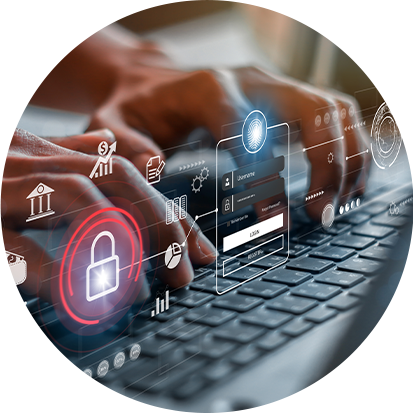How to recognise and avoid phishing attacks
In today’s digital landscape, businesses are increasingly reliant on digital tools and communication. This increased connectivity has many advantages, but also comes with the growing threat of phishing attacks, which can have significant consequences for organisations. Phishing attacks in a business context often involve cybercriminals attempting to trick employees or even customers into revealing sensitive information or gaining unauthorised access to company systems and data. These attacks often mimic trusted sources or individuals, creating a false sense of security. Phishing attacks can occur through emails, text messages, fake websites, social media, and even phone calls.
Phishing attacks pose a significant risk to the security of business data and the continuity of operations, making it crucial for businesses to be vigilant and well-prepared to protect themselves and their stakeholders from these threats. In this blog, we will delve into how businesses can recognise phishing attacks and defend against them effectively.

Recognising Phishing Attacks
• Suspicious Email Addresses – Business email addresses are often the primary target for phishing attacks. Pay close attention to sender addresses, especially those with slight misspellings or unfamiliar domains.
• Urgent Business Matters – Phishing emails may claim to be regarding urgent business matters, such as pending contracts, unpaid invoices, or legal issues. These tactics pressure employees to respond quickly.
• Unsolicited Attachments or Links – Caution employees against opening attachments or clicking on links in unsolicited emails. Encourage them to verify the source if they have doubts.
• Impersonation of Executives – Cybercriminals may impersonate executives within the company, attempting to deceive employees into disclosing sensitive data.
• Requests for Sensitive Information – Warn employees against sharing sensitive business information via email. Genuine businesses usually use secure channels or in-person verification for such requests
Defending Against Phishing Attacks
• Employee Training – Regularly educate employees about the risks of phishing attacks and provide them with guidance on how to recognise and report suspicious messages.
• Strict Email Filtering – Implement robust email filtering systems to identify and block phishing emails before they reach employees’ inboxes. Techsol Group offer a secure email solution that gives businesses an extra layer of protection against phishing and other cyberattacks.
• Multi-Factor Authentication (MFA) – Enforce the use of MFA tools such as Microsoft Authenticator for accessing business systems and accounts. Microsoft Authenticator is an MFA app that provides secure and convenient access to Microsoft and third-party accounts by offering options for passwordless login, biometric authentication, and one-time passcode generation. This extra layer of protection is highly effective in preventing unauthorised access.
• Secure Communication Channels – Promote the use of secure communication channels for sensitive information sharing. Microsoft Outlook includes built-in encryption features, providing a secure way to send sensitive information over email. This ensures that only authorised recipients can access the content. Microsoft Teams also supports end-to-end encryption for messages and video calls, making it a secure platform for real-time communication and collaboration on sensitive topics.
• Regular Updates and Patch Management – Ensure that all software, including operating systems and security tools, is kept up to date with the latest security patches to guard against known vulnerabilities.
• Incident Response Plan – Develop and maintain an incident response plan to mitigate the impact of a successful phishing attack. This plan should outline the steps to take when a breach is suspected or confirmed. Our continuity, backup, and recovery solutions offer peace of mind that your business wouldn’t be immobilised if an attack were to happen.


Phishing attacks pose a significant threat to businesses, potentially leading to data breaches, financial loss, and damage to reputation. Recognising and defending against these threats is a shared responsibility within an organisation. By raising awareness, implementing security measures, and having a well-prepared incident response plan in place, businesses can significantly reduce the risk of falling victim to phishing attacks. A proactive and informed approach to cybersecurity is essential for safeguarding business operations and reputation.
By harnessing our technical expertise and industry-leading tools, Techsol Group can help protect your business against phishing attacks and other cybersecurity threats. If you’d like to speak to one of our cybersecurity experts, feel free to call us on 03300 245447 or email info@techsolgroup.co.uk.







